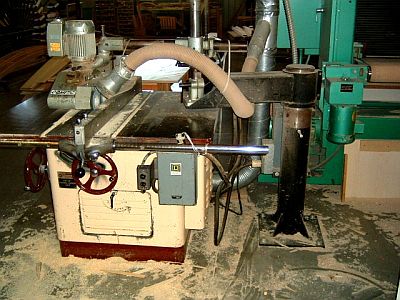Question
I am looking for a method of end drilling 7/8" diameter holes 6-1/4" deep in 5/4 walnut (1-1/16" thick). Holes are grouped in twos with 1/2" solid wood between. Long drills build up too much side friction and split the wood. Forstner type bits don't clear the wood chips and the bit locks and cannot be withdrawn without removal from the chuck. Does anyone have any suggestions?
Forum Responses
(Solid Wood Machining Forum)
From contributor A:
A 6.25" deep hole is certainly going to require a "long" drill bit. Frequently withdrawing a drill bit during the boring process will "clear" the chips and help the bit stay true.
For accuracy I would use a brad point style bit. If accuracy is not important I would try a spade style bit. It can be reground to be more effective by grinding the cutting edges to a steep angle from the spur to the outside edge.
Machinists also have a special type of step drill that bores a smaller diameter on the first end of the bit, followed by a diameter of the required finished size.
The same principle can be employed by boring a hole to approximately .8125" with a brad point, and then with the same drill press setting, running a .875" twist drill bit into the hole.
Machinists may even drill a .0625" hole carefully through their material and then let that small hole be a centering device for boring the larger hole.
If you can control the speed, the old fashioned auger style bits are still made today and are used by electricians and plumbers. I have bought at least a hundred used ones over the years and they are easily sharpened with an auger file.
Use caution as they have a threaded lead screw which pulls the bit through the cut like a screw. I would be very cautious about trying to use one in a drill press.
Then, regrind the cutting edge with a 7 to 15 degree angle from the od of the drill, tilting downwards to the point, again following the existing back clearance. This is called an acme cut. Now the brad point enters the material followed by the outlining od (where the spurs were), which sizes the hole without dragging. You will still require a 6-1/2 to 7" twist length to clear the chips. Use 1700 to 1725 RPM. One note - the modified drill will not work as well boring cross grain.
